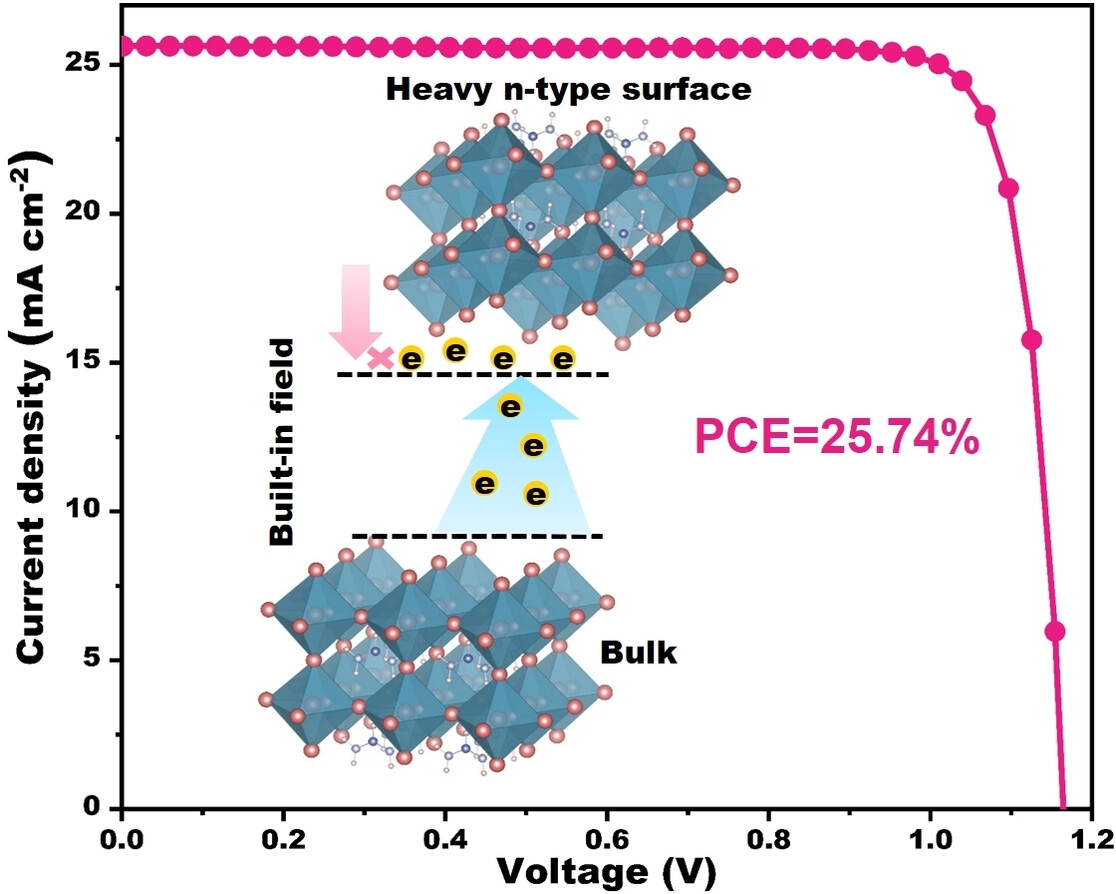A research group led by Prof. GE Ziyi at the Ningbo Institute of Materials Technology and Engineering (NIMTE) of the Chinese Academy of Sciences (CAS), has modulated the heavy n-type behaviour to achieve high-efficiency and stable inverted (p-i-n) perovskite solar cells (PSCs) by incorporating non-conjugated passivants.
This work was published in Angewandte Chemie as a Hot Paper.
Due to the high power conversion efficiencies (PCEs) and low fabrication cost, PSCs have attracted great attention in recent years as a very promising green energy technology.
The surface defects and band misalignments between the perovskite film and the electron transport layer greatly limit the efficiency and stability of p-i-n PSCs. Organic ammonium passivants have been widely used as interfacial layers to address these interfacial issues.
However, these passivants failed to improve electron extraction and reduce carrier recombination through heavy n-type doping on the perovskite surface.
Scientists at NIMTE developed non-conjugated ammonium passivants to address the interfacial issues, which could provide efficient defect passivation for perovskite film.
A significant reduction in photoluminescence (PL) intensity of perovskite film has been observed for the first time in non-conjugated passivants, which may bring a new perspective.
By precisely controlling the electron-deficient ability of piperazinium iodide derivatives, the interfacial band bending of the perovskite film has been regulated, thus achieving heavy n-type doped perovskite.
As a result, an additional built-in electric field was generated on the perovskite surface, effectively enhancing electron extraction and reducing carrier recombination.
A champion PCE of 25.74% with a high open-circuit voltage (VOC) of 1.166 V and fill factor (FF) of 85.4% was achieved in the device treated with the non-conjugated passivants.
When stored in a nitrogen environment at 85 °C for 1,200 hours, the unencapsulated device maintained 88% of its initial PCE, indicating its excellent long-term stability.
This work was supported by the National Science Fund for Distinguished Young Scholars (No. 21925506), National Natural Science Foundation of China (Nos. U21A20331, 22439004), Zhejiang Provincial Natural Science Foundation of China (No.LQ22E030013), and the Key Research and Development Program of Ningbo (No.2022Z120), etc.

Fig. The high-performance inverted perovskite solar cells developed through heavy n-type doping (Image by NIMTE)
Contact
YANG Daobin
Ningbo Institute of Materials Technology and Engineering
E-mail: yangdaobin@nimte.ac.cn

